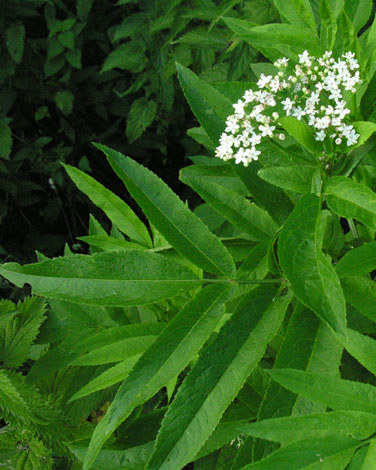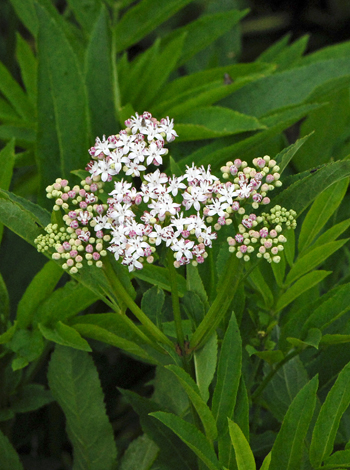Sambucus ebulus Dwarf Elder C DDDD N


No other plant ever caused me as much difficulty to identify as this one. It looks quite easy because it has distinctive leaves and the umbels, for it looks exactly like an umbellifer, have quite prominent and attractive florets. I looked in several books with drawings or photos and there were one or two which were similar but the only one which was close was Sium latifolium (Greater Water-parsnip) so I recorded it as that even though it is supposed to be an East Anglian plant. The Wild Flower Society Diary Scrutineer was having none of this and in the politest possible way indicated that I must be mistaken.
I saw it again the next year and this went armed with the BSBI book on umbellifers. Even sitting next to the plant and going through every one in the book yielded no better answer than the incorrect one I had already submitted. I gave up until about fifteen years later I visited the site again with a friend who is a good deal better botanist than I am. He was puzzled by it at first but then suddenly said "It's Dwarf Elder" - I looked it up and sure enough flower shape, leaf shape, habit and everything fitted.
All fitted except one thing - it isn't classified as an umbellifer even though it looks like one. So it wasn't in the umbellifer book. Obvious to those who know I suppose but it gets a quadruple D for difficulty for me personally as it took over fifteen years to find out what the damn thing was.
Fittingly therefore this pesky plant was the 1,000th photograph to be added to the library.
Sambucus ebulus is dotted around and evenly spread in England, Wales and Ireland without ever being common. Records diminish as you go north and the substantial site at Ruthven Barracks must be one of the most northerly in Britain.
LHS: Stream side in Pistyll, Lleyn peninsula, North Wales 25th July 2005 RHS: Ruthven barracks, Scotland 26th July 2009
Added on 25th July 2005, updated 27th January 2012




